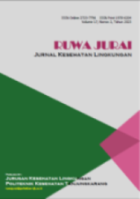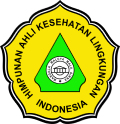Youth Space Development in Urban Kampong of Pondok Cina, Depok City, Indonesia
DOI:
https://doi.org/10.26630/rj.v18i3.4650Keywords:
Adolescents, Urban kampong, Environment, Social welfare, Youth spaceAbstract
Youth spaces are necessary for adolescents to express themselves, build community, and strengthen identity. The study aims to identify needs and preferences and obtain alternatives for developing youth spaces in the urban kampong of Pondok Cina, Depok City. Qualitative research was conducted from February to April 2024. Data was collected through observation, in-depth interviews, and Focus Group Discussions. The study found that adolescents need multifunctional youth spaces, including places to socialize, develop talents, and exercise. An attractive, comfortable, and inclusive space design is essential, including complete facilities that support young people's activities. This study also emphasizes integrating youth spaces with environmental health, such as waste management and environmental education. Developing youth spaces that are managed effectively, sustainably, and integrated with environmental healthh can improve quality of life, prevent juvenile delinquency, and build a healthy community.
References
Abbott-Chapman, J., & and Robertson, M. (2001). Youth, Leisure and Home: Space, Place and Identity. Loisir et Société / Society and Leisure, 24(2), 485–506. https://doi.org/10.7202/000192ar
Adler, K., Salanterä, S., & Zumstein-Shaha, M. (2019). Focus Group Interviews in Child, Youth, and Parent Research: An Integrative Literature Review. International Journal of Qualitative Methods, 18. https://doi.org/10.1177/1609406919887274
Arofah, L., & Suheri, T. (2018). Kajian Pengembangan Kampung Kreatif Studi Kasus Kampung Kreatif Cibunut, Kelurahan Kebon Pisang. Jurnal Wilayah Dan Kota, 5(02), 32–38. https://doi.org/10.34010/jwk.v5i02.2160
Dalrymple, K. A., Garrido, L., & Duchaine, B. (2014). Dissociation between face perception and face memory in adults, but not children, with developmental prosopagnosia. Developmental Cognitive Neuroscience, 10, 10–20. https://doi.org/10.1016/j.dcn.2014.07.003
Fhadila, K. D. (2017). Menyikapi Perubahan Perilaku Remaja. JPGI: Jurnal Penelitian Guru Indonesia, 2(2), 16–23. https://doi.org/http://dx.doi.org/10.29210/02220jpgi0005
Hantono, D. (2019). Kajian Perilaku Pada Ruang Terbuka Publik. NALARs, 18(1), 45. https://doi.org/10.24853/nalars.18.1.45-56
Herdiana, D., & Nurul, S. (2020). Implikasi Tatanan Normal Baru Terhadap Kehidupan Sosial Kemasyarakatan. Jurnal Ilmiah Dinamika Sosial, 4(2), 300. https://doi.org/10.38043/jids.v4i2.2462
Ihle, T., Jahr, E., Martens, D., Muehlan, H., & Schmidt, S. (2024). Health Effects of Participation in Creating Urban Green Spaces—A Systematic Review. Sustainability, 16(12), 5000. https://doi.org/10.3390/su16125000
Jaya, M. A. (2018). Transformasi Tempat Ketiga (third place) dari Ruang Dalam (indoor) Menuju Ruang Luar (outdoor): Studi Kasus Kota Palembang. Arsir, 2(1), 57. https://doi.org/10.32502/arsir.v2i1.1240
Kemenkes RI. (2023). Peraturan Menteri Kesehatan Republik Indonesia Nomor 2 Tahun 2023 Tentang Kesehatan Lingkungan.
Maharani, B., Permana, R. C. T. H., & Utomo, R. P. (2024). Faktor-faktor yang Mendorong Penggunaan Ruang Publik bagi Warga di Permukiman Padat (Studi Kasus Lingkungan Rusunawa Begalon I & II, Kota Surakarta). Desa-Kota, 6(1), 14. https://doi.org/10.20961/desa-kota.v6i1.75698.14-25
Maswakang, M., Yamin, A., & Zainuddin, Z. (2023). Sistem Pengembangan Perpustakaan Berbasis Inklusi Sosial Sebagai Tempat Ketiga di Kabupaten Sumbawa Barat. JIIP - Jurnal Ilmiah Ilmu Pendidikan, 6(2), 1000–1006. https://doi.org/10.54371/jiip.v6i2.1468
Nakano, D., Muniz, J., & Dias Batista, E. (2013). Engaging environments: tacit knowledge sharing on the shop floor. Journal of Knowledge Management, 17(2), 290–306. https://doi.org/10.1108/13673271311315222
Nolas, S.-M. (2014). Exploring young people’s and youth workers’ experiences of spaces for ‘youth development’: creating cultures of participation. Journal of Youth Studies, 17(1), 26–41. https://doi.org/10.1080/13676261.2013.793789
Nugroho, A., Fatonah, A., Wijaya, D. P. E., Putri, R. P., Fikri, M. N., Setiawan, O., Kurniawan, L. Y., Astuti, J. S., Primandika, F. T., & Budiarti, S. A. C. (2020). Menumbuhkembangkan Kepedulian Siswa terhadap Lingkungan Melalui Kegiatan Penghijauan di MIM Pakang Andong, Boyolali. Buletin KKN Pendidikan, 2(2). https://doi.org/10.23917/bkkndik.v2i2.11196
Nursyahbani, R., & Pigawati, B. (2015). Kajian Karakteristik Kawasan Pemukiman Kumuh di Kampung Kota (Studi Kasus: Kampung Gandekan Semarang). Teknik PWK (Perencanaan Wilayah Kota), 4(2). https://doi.org/10.14710/tpwk.2015.8463
Putri, A. F. (2018). Pentingnya Orang Dewasa Awal Menyelesaikan Tugas Perkembangannya. SCHOULID: Indonesian Journal of School Counseling, 3(2), 35. https://doi.org/10.23916/08430011
Rau, E. P. E., Kaseke, M. M., & Kairupan, B. H. R. (2021). Analisis Perilaku Aktivitas Fisik selama Pembatasan Sosial pada Dewasa Muda. E-CliniC, 9(2), 437. https://doi.org/10.35790/ecl.v9i2.34434
Rijal, F. (2016). Perkembangan Jiwa Agama Pada Masa Remaja ( Al-Murahiqoh). Pioner: Jurnal Pendidikan, 5(2). https://doi.org/http://dx.doi.org/10.22373/pjp.v5i2.3354
Runkat, J. C. (2017). Sense of place pada pemukiman kampung kota : studi kasus Kampung Kota Cicukang dan Kampung Kota Dago Pojok, Bandung [Universitas Katolik Parahiyangan]. https://doi.org/http://hdl.handle.net/123456789/3879
Sari, M. N. (2023). Implementasi Pengembangan Ruang Kepemudaan (Youth Space) di Kecamatan Coblong Kota Bandung. Konferensi Nasional Ilmu Administrasi, 367–373. https://knia.stialanbandung.ac.id/index.php/knia/article/view/889
Sari, N., Wiranegara, H. W., & Supriatna, Y. (2024). Indikator Sense of Place Kampung Kota dn Rusunawa. Jurnal Penelitian Dan Karya Ilmiah Lembaga Penelitian Universitas Trisakti, 9(1), 203–213. https://doi.org/10.25105/pdk.v9i1.18167
Srinaga, F., Thiodore, J., & P. Mensana, A. (2020). Pengembangan Ruang Interaksi Sosial di Gereja Kristus Ketapang. Prosiding Konferensi Nasional Pengabdian Kepada Masyarakat Dan Corporate Social Responsibility (PKM-CSR), 3, 921–932. https://doi.org/10.37695/pkmcsr.v3i0.721
Sudarwanto, B., Hardiman, G., & Sardjono, A. B. (2017). Pemahaman Fenomena Pengetahuan Arsitektur Kampung Kota (Kasus: Kampung Bustaman Berbasis Kuliner). NALARs, 16(2), 145. https://doi.org/10.24853/nalars.16.2.145-154
Suryana, E., Hasdikurniati, A. I., Harmayanti, A. A., & Harto, K. (2022). Perkembangan Remaja Awal, Menengah Dan Implikasinya Terhadap Pendidikan. Jurnal Ilmiah Mandala Education, 8(3). https://doi.org/10.58258/jime.v8i3.3494
UNICEF. (2005). Situasi Anak-Anak dan Kaum Muda di Kota-Kota di Indonesia. https://www.unicef.org/indonesia/media/12171/file/Analisis Situasi Anak dan Remaja di Kota-Kota Indonesia.pdf
Wicaksono, M. F. (2022). Preferensi Anak Muda Kabupaten Tulungagung Dalam Menentukan Learning Space. Publication Library and Information Science, 6(1), 59–78. https://doi.org/10.24269/pls.v6i1.5671
Widyakusuma, A. (2020). Dampak Elemen Interior Terhadap Psikologis dan Perilaku Pengguna Ruang. Jurnal KaLIBRASI : Karya Lintas Ilmu Bidang Rekayasa Arsitektur, Sipil, Industri, 3(2), 38–54. https://doi.org/10.37721/kalibrasi.v3i2.740
Zukor, K., Wang, H., Siddharthan, V., Julander, J. G., & Morrey, J. D. (2018). Zika virus-induced acute myelitis and motor deficits in adult interferon αβ/γ receptor knockout mice. Journal of NeuroVirology, 24(3), 273–290. https://doi.org/10.1007/s13365-017-0595-z
Downloads
Published
How to Cite
Issue
Section
License
Copyright (c) 2025 Ruwa Jurai: Jurnal Kesehatan Lingkungan

This work is licensed under a Creative Commons Attribution-NonCommercial 4.0 International License.

Ruwa Jurai: Jurnal Kesehatan Lingkungan is licensed under a Creative Commons Attribution-NonCommercial 4.0 International License.
Authors who publish with this journal agree to the following terms:
- Authors retain copyright and grant the journal right of first publication with the work simultaneously licensed under a Creative Commons Attribution-Non Commercial License that allows others to share the work with an acknowledgment of the work's authorship and initial publication in this journal.
- Authors are able to enter into separate, additional contractual arrangements for the non-exclusive distribution of the journal's published version of the work (e.g., post it to an institutional repository or publish it in a book), with an acknowledgment of its initial publication in this journal.
- Authors are permitted and encouraged to post their work online (e.g., in institutional repositories or on their website) prior to and during the submission process, as it can lead to productive exchanges, as well as earlier and greater citation of published work.









